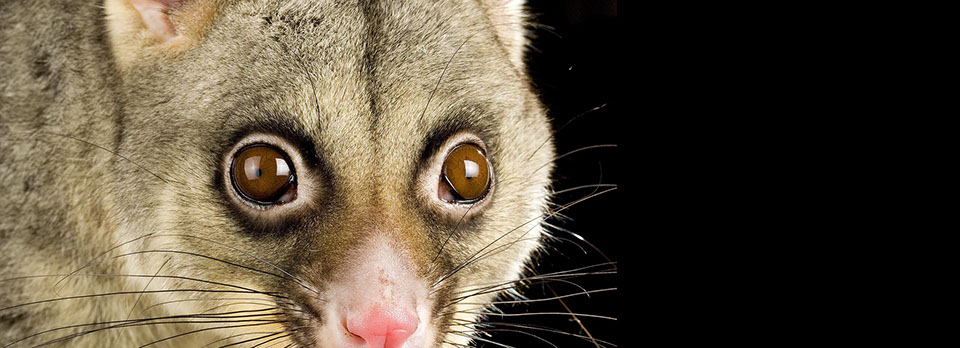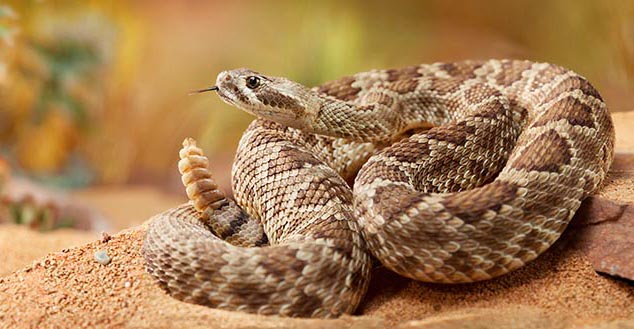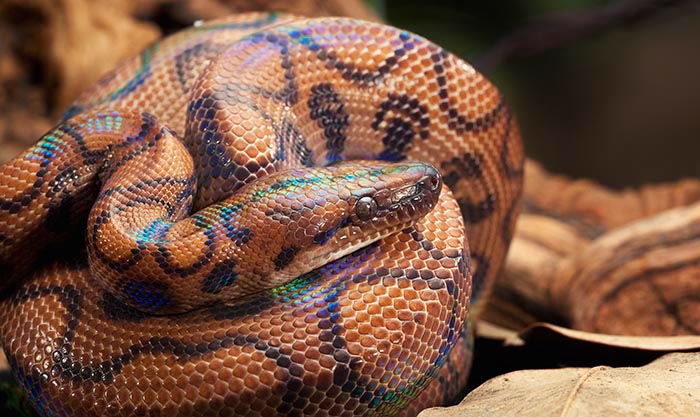
Nic Bishop
Author and Photographer
of Nature Books for Children
Book Notes - Taking the Photographs for Nic Bishop Snakes
It took several years of persuasion from my publisher before I decided to work on a book about snakes. The problem is that they are among the most dangerous and difficult of animals to photograph.
The dangers apply especially to venomous snakes. If you are within strike range of a venomous snake, and the snake decides to bite, there is little you can do about it. Snakes are so incredibly fast that they will bite you, often multiple times, before your brain has time to react. And even a small venomous bite can be deadly. Then there are snakes that can be dangerously big and powerful, such as large anacondas, boas, and pythons. I didn’t want to work with these.
The other difficulties of photographing snakes are varied. Snakes are shy, wriggly, highly-strung animals that have no interest in posing for a camera. They also have long,“one dimensional” bodies which do not fit the compositional ideals of a rectangular photographic format. And they have rather expressionless faces, which makes it harder to create pictures with character.
On the other hand, snakes are extremely interesting. They have such different bodies to other land-dwelling vertebrates, such as lizards and mammals (which include us). Most obvious is that they have don’t have significant legs or arms, which are so useful to the rest of us. But instead they have some extraordinary superpowers. For example they can detect scent trails with their tongues and pinpoint ground vibrations with their bodies. Some use heat seeking organs for night vision. Then, most famously, snakes have potent venom and the ability to swallow prey many times the size of their heads.
So eventually curiosity drew me into doing a book. But there were still those dangers and difficulties to deal with.
To photograph dangerous and venomous snakes I visited people who were snake specialists, who kept these snakes in their care and were very experienced at looking after them. I used a telephoto lens that allowed me to take pictures safely outside of the snake’s strike range. The only exception was the diamondback rattlesnake (below). This picture was taken at closer quarters, so I photographed the snake while it was safely inside a glass enclosure. I also relied on the assistance and advice of the snake specialist at all times when photographing each of these snakes, to be sure everything went without incident.

I didn’t photograph any snakes that were dangerously big and powerful, such as large pythons, boas, and anacondas. In these cases I photographed young individuals, which were very much more smaller.
Photographing "non-dangerous" snakes was a bit more relaxed, although care still had to be taken (see note below). Many of the "non-dangerous" snakes were captive bred animals that I borrowed from their owners. Sometimes I kept these at home, which allowed me the time to get to know them. I had to learn to attend to all their special needs so that they were well looked after. This also allowed me time to observe them and set up my photography in a way that was not stressful for the snake. Snakes are very highly strung, so it was important to work slowly and carefully so they were always relaxed and content. And it was important for me too. Most snakes will bite if they are upset, and even so called “non-venomous” snakes often have some venom, which can be harmful.
To get the best photographs I took special care with lighting. I wanted to show the beautiful textures and colors of a snake’s scaly skin and show off the the strong coils of its body. To do this I used many of the lighting techniques that a fashion photographer would use to photograph a model, such as soft boxes and back-lighting. A lot of time was also spent observing the snake and waiting patiently for it to curl up in a photogenic posture.
Lighting was especially tricky for this rainbow boa (below). Using soft boxes showed the snake’s three dimensional form perfectly, but completely failed to show its beautiful iridescent colors. A more direct lighting, on the other hand, showed up the iridescence but made the snake’s body look flat and two dimensional.

So the solution was to take two photographs, one with each lighting type, and then combine them. Luckily for me, the snake was so relaxed it stayed completely motionless while I swapped the lighting between shots. And by combining the two images I got to show the snake’s form perfectly, as well as its unusual iridescence.
The African egg-eating snake (below) was the most difficult photograph I took. First it took a long time to find someone I could borrow one of these snakes from. I put it in a large glass tank and planned to photograph through the sides while it swallowed a small chicken’s egg. But unfortunately the snake was too small to eat the egg. So I had to find a bigger snake.

The second snake was big enough to swallow a chicken’s egg, and I waited up night after night (the snakes are nocturnal so you have to do this at night), but it barely noticed its big meal. The reason, I discovered later, was that it had recently eaten an egg. And after such a big meal it wasn't likely to want another for many weeks.
So I tried a third snake. This one was definitely hungry because it would wriggle up and give the egg a taste lick with its tongue. But then it would change its mind and wriggle away again, before coming back for another lick. It seemed almost to be teasing me. I sat for hours each night waiting to press the shutter each time it hungrily approached the egg, but then it would change its mind. Eventually the waiting made me hungry, so one night I headed to the kitchen to make a sandwich. And you can guess what happened while I was gone. It ate the egg!
Snake number three had simply been too shy to eat while I was watching. It’s not surprising, really. An egg-eating snake is in an awkward position if a predator turns up when it has a big egg half-way down its throat. It was quite sensible of the snake to be be a little nervous of eating when a big human was nearby, waiting to take a picture. And, of course, once snake number three had swallowed its egg, I knew it wouldn't want another for a long time.
So I tried snake number four, which was the last one I could find. And luckily for me, it wasn’t a shy snake. It swallowed the egg straight away! Watching this event was quite amazing. Once the snake had the egg in its mouth it punctured it with a bony spike and deflated as the contents were swallowed. Then it spat out the empty shell and took a long rest to recover from its exertion.
note - even "non-dangerous" snakes were photographed with a lot of care. Most so called non-venomous snakes do have some venom, and this can potentially be serious. Snakes also have sharp teeth and can inflict painful bites. Also, I only photographed small manageable specimens of boas, pythons and anaconda.
Text and Images - Copyright Nic Bishop